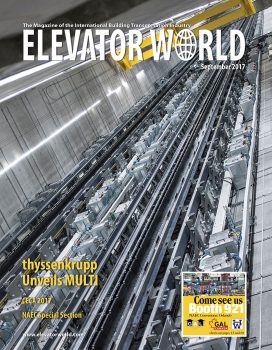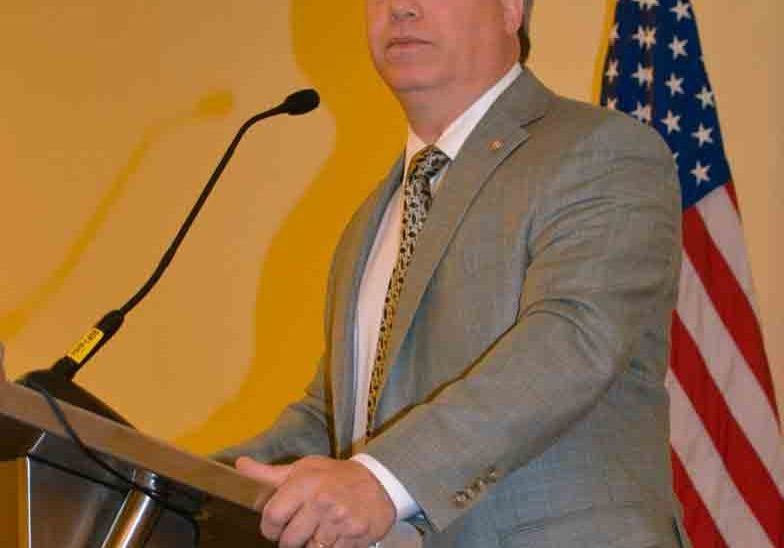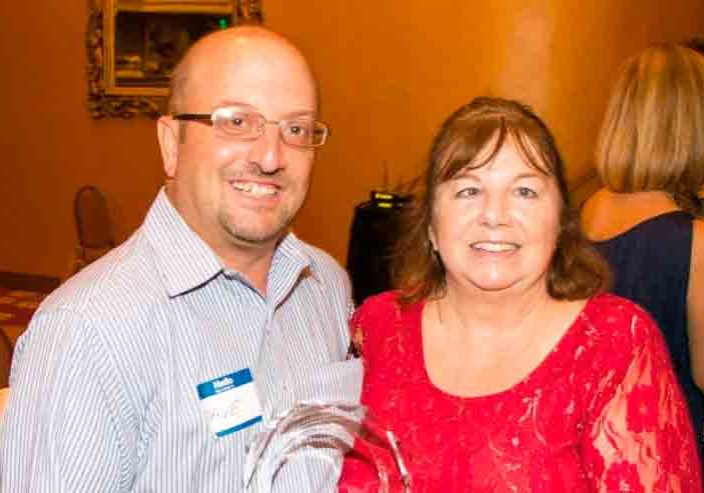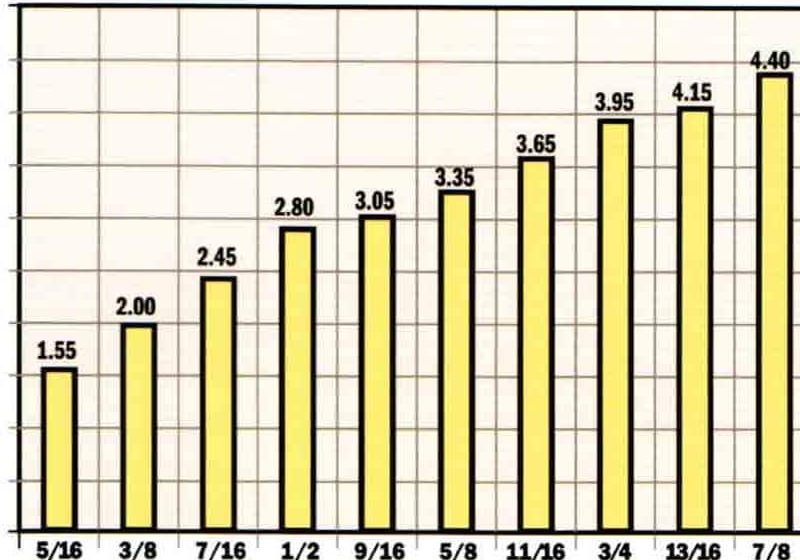Company Spotlight: 2N TELEKOMUNIKACE
Sep 1, 2017
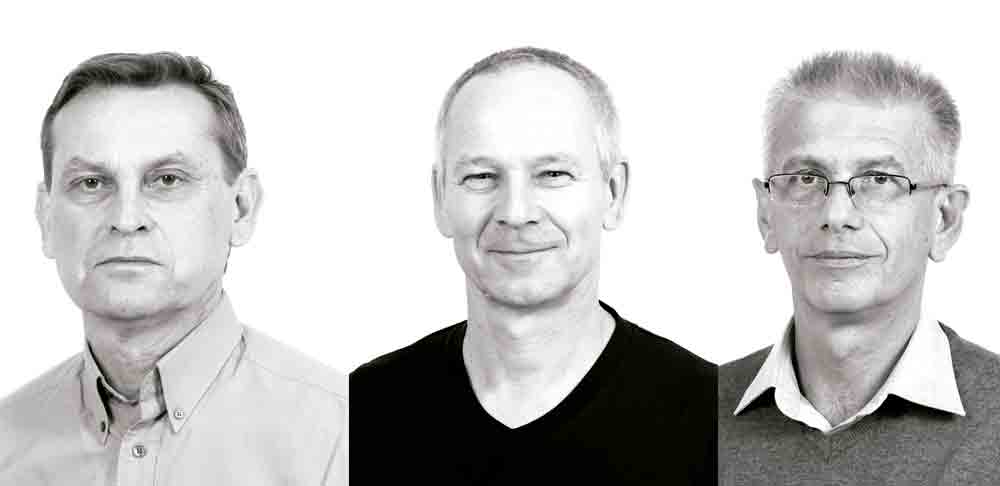
From its Prague headquarters, 2N has become number one in IP security systems worldwide.
Headquartered in Prague, Czech Republic, 2N TELEKOMUNIKACE a.s. has grown exponentially from its original three founders to number one in IP security systems worldwide, with more than 240 employees and offices in the U.S., Germany, Italy and the U.K. Europe is 2N’s biggest customer for its lift-industry products, which currently consist of three different emergency communication systems, ranging from today’s industry standard to “future-proof” internet protocol (IP). It is likely to remain that way, according to 2N CEO Oldřich Stejskal. However, the company is looking to grow its market share elsewhere. Stejskal states:
“We are getting a lot of interest about our lift solutions from the Middle East, especially in regard to IP-based emergency communications, which is represented by two of our products, Lift8 and the brand-new LiftIP. Moreover, we would like to grow our U.S. business in close cooperation with our partners there.”
There is particularly strong demand for 2N lift products from the U.A.E., according to the company. This demand is being driven by the transition from proprietary two-wire intercoms to IP-based devices that fulfill EN 81-28. Lift8 is widely used in many new projects, and LiftIP is gaining popularity. There are new construction projects that use 2N solutions in Dubai and Abu Dhabi in the U.A.E., and Doha, Qatar. 2N partner Draka Elevator Products/Prysmian Group is opening a distribution center in the region, increasing the availability of the products, which are already part of Schindler, KONE and thyssenkrupp projects throughout the Middle East.
2N’s most popular products are the Lift1 (communicator for single-shaft environments using PSTN interface when used alone) in combination with a Global System for Mobile Communications (GSM)/Universal Mobile Telecommunications System (UMTS) gateway. The company expects the trend to soon switch to IP technology, making LiftIP and Lift8 (with an IP module) its most popular products. LiftIP uses Voice over IP (VoIP), and Lift8 can use VoIP, GSM, UMTS, long-term evolution or public switched telephone network to transmit sound to and from a lift cabin. The company explains what the customer should know before making a purchase:
“In deciding which IP product to use for [a] particular project, it is important to know the differences between the two products to be able to distinguish the benefits of each. LiftIP is a pure IP system, running completely on the IP infrastructure. It requires an Ethernet cable within the traveling cable in the shaft. This makes it suitable to use in combination with an IP camera, which will add the extra security edge to the elevator and provide a livestream of what is happening inside the cabin. For Lift8, on the other hand, a hybrid IP technology is used, meaning an IP connection is necessary only for the machine room. From there on, within a lift shaft, a two-wire bus is used, making it suitable for older building installations in which IP is not yet available within the shaft.
“The other important distinction between the two products is that LiftIP is a communicator for a single-shaft elevator, whereas Lift8 can have up to eight shafts connected to a single, central unit, making it a cost-effective solution.”
Stejskal states project size is not an issue for 2N: the company will find a solution that fits. This means 2N gathers information, such as building layout, far in advance.
Changes in Company Structure
In May 2016, 2N was acquired by Swedish manufacturer Axis Communications, which is number one in the world in IP cameras, but it retains autonomy. The companies share expertise and R&D findings. Stejskal observes being part of Axis has enhanced market access, noting the companies are jointly focused on accelerating the conversion from analog to IP intercom systems. He reflects on the path that brought 2N to this point:
“Perhaps our most significant achievement during our first 10 years was becoming one of the top three suppliers of PBX systems (with a 15% market share), together with Panasonic and Siemens, in the Czech Republic. After this successful period, we branched out in 2000 into foreign markets, concentrating on our own products and in-house development. Within five years, we became one of the best companies in the world in GSM gateway technology, connecting networks, mobile and fixed-operator services.”
The third stage of 2N’s development came with the introduction of a unique door intercom built on IP technologies. In 2008, 2N was the first in the world to introduce this type of communicator. Since then, the market has undergone dramatic changes, and the company, Stejskal states, “has been quick to successfully reorient our products and sales channels toward new, growing and highly prospective fields.”
Lift8 was created “with maximum modularity in mind,” he says. “The modularity starts with the wide selection and seamless upgrade of [the] communication interface, making it possible to expand the system on the go without the need to change it.” Today, 2N is used in buildings’ security. Its lift-industry customers include medium-sized and large elevator companies, as well as distributors like Draka/Prysmian and Schmersal Böhnke + Partner GmbH.
Looking to the Future
2N is striving to get more elevator companies to transition from analog to IP technology for building security (including access control for elevators). To attract new customers, it actively approaches companies from all over the world using different methods, including exhibiting at trade fairs. Over the years, 2N has made it a point to attend Interlift, held every two years in Augsburg, Germany. This year 2N will be in booth 5052, hall five.
2N’s area account managers have designated territories for which they are responsible, so a big part of their job is to know the market and competition and have good relationships with local companies. Stejskal observes this enables them to devise a strategy on how to grow business in their respective regions. 2N uses a distribution/sales model and directs potential customers to regional distributors. Distributors are expected to have great product knowledge to be able to fully support customers, both logistically and technically.
As lifts are increasingly being integrated into security systems, it is important IP solutions are implemented, Stejskal states. This is because “in more and more countries, fixed telephone lines are being replaced with Next Generation Networks, and mobile networks migrated to 4G and 5G,” he observes. “All those networks are IP based.” This means if a customer wants to be certain that a solution will last longer than a few years, it must be IP based.
Still, many in the elevator industry are resistant to the changeover to IP, Stejskal says, adding that 2N offers support and training for any new customer. For example, the majority of 2N’s Middle East projects are based on IP in which legacy intercoms are upgraded. Such upgrades require a mindset change and are often driven by customers who force the supplier to use modern technology. In Europe, the change is about to come as analog lines migrate to IP.
Stejskal says 2N believes its ability to provide support and troubleshoot set it apart from the competition, which is vast. Many companies offer low-cost intercom and emergency-communication systems, which appeal to customers because of their price, he states. Although this may seem smart at first, it can be costly in the long run, he says, elaborating:
“Instead of saving money, the company is forced to spend money because the products are not working as promised, and they are not getting support when needed. Their employees have to troubleshoot and spend time on something they are not supposed to. So, in the end, before going for emergency communicators that have an attractive price tag, look at all the other aspects of the provider as a whole so you eliminate unpleasant surprises further on. Doing this will save both money and time, which can be invested in something more meaningful than troubleshooting something that is not working as promised.”
Get more of Elevator World. Sign up for our free e-newsletter.

